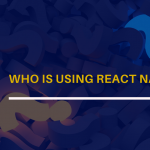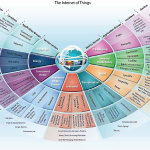6 signs you need a Business Intelligence solution
 Most companies begin to make sense of data almost as soon as they grow past a few employees. Systems generate lots of data which needs to be compiled to turned into information. Here are a few signs that indicate that a business intelligence solution can be helpful for you:
Most companies begin to make sense of data almost as soon as they grow past a few employees. Systems generate lots of data which needs to be compiled to turned into information. Here are a few signs that indicate that a business intelligence solution can be helpful for you:
You spend several hours every day compiling data from multiple systems
About half the effort in any business intelligence initiative is pulling data in from various systems, cleaning it up, normalizing it and then aggregating. Commonly known as data warehouse modelling and ETL, these exercises usually involve discussions on the schematics and semantics of data across the organization (and sometimes beyond it to partners).
You need to make decisions on large quantities of data
Operational systems like POSs or Financial systems generate a lot of data. This data can not be used for decision making unless it is aggregated or rolled up across certain dimensions. For e.g. the answer to the question: “What products are bought most often together in a retail outlet” is one that needs aggregation of POS data across several months/years. BI systems have powerful data modelling and OLAP (on line analytical processing) capabilities that let it do exactly that (in both real-time and offline modes).
You have difficulty prioritizing things in the company
If you don’t know where your problems are you are likely to spend much of your energy in the wrong place. Business intelligence tools usually provide the ability to view performance on a 10,000 foot level drilling into problem areas till you get to an operational level.
There is no standardized way to track and measure performance in the organization
Several departments, systems or sub-organizations may view things very differently in the organization. A consensus on Key Performance Indicators (KPIs) against which everyone’s performance is measured is necessary for corporate governance. Business intelligence tools usually offer hierarchical scorecards designed for operational staff, managers, executives etc to get on the same page. These are often weaved into the compensation and performance evaluation schemes in organizations.
Several people in your company are dealing with several versions of the same report
Several versions of the truth being exchanged through emails. Ever seen an email with an attachment named InventoryReport_v2(James edit after Alley’s edit)_10_23_2014_3:52PM? Business intelligence solutions usually aim to bring all users on a common dashboard where changes to reports can be seen by everyone. These dashboards usually support multi-user access and various levels of security controls to restrict and control users access to data.
Relationship between input and output is not well understood
For example is the time of year related to sale of good in a certain location? To what extend does weather contribute to the sale of a certain product. What will be the sales next year based on the weather, macro-economic data, past sales history and marketing predictions? Predictive analytics is an area of BI designed to answer questions that require identifying or spotting patterns or to extrapolate future trends from existing data.







